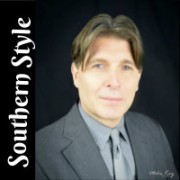A voice that soared above the pines – Curly Seckler

Randall Franks and Curly Seckler in 1980s.

Curly Seckler
My New Year’s Eve show got me home about 3:30 a.m., and I quickly tried to get to sleep with a plan to rise early and head to Nashville. I awoke on time and aimed my burgundy Chevy Lumina towards the goal a little over two hours away. The trip had been made hundreds of times in my life, especially as my country music career was in full swing there.
I thought back to early trips which found me knocking on the door of a home off Dickerson Road when legendary bluegrass musician and singer Curly Seckler came to the door. I chose to emulate him as a child. He had done this many times and often told others especially as my star in music and TV rose of my initial youthful visit.
His door was always open to me, and he was always generous with his time, whether in person, on the phone or on the road. This trip was however not to knock on his door but to pay my respects to his family and join with his other friends and admirers as we said goodbye to the 98-year-old.
Seckler’s long career combined his talents with the majority of the genre’s first-generation legends from Charlie Monroe to “Doc” Tommy Scott, Jim and Jesse McReynolds to the Stanley Brothers.
He was most recognized by historians and fans though by his role as the tenor singer and mandolinist to Lester Flatt and Earl Scruggs as part of the Foggy Mountain Boys. One of the key artists which infused bluegrass into the fabric of American culture through television, recordings and radio. It was those recordings that also drew me as a young boy, and his tenor that I tried to match as I sang.
As I walked towards the door of the Spring Hill Funeral Home the bitter cold chilled my cheeks. I followed in some of the musicians that were to be singing who made their way to the coffin storage room to practice. I said hello to one of their wives who was waiting and soon found his biographer Penny Parsons, who wrote “Foggy Mountain Troubadour” opening up the viewing room. I was the first to arrive, so after a brief visit with Penny, I was able to spend some time with my long-time friend, just he and I as all the memories flooded back. I reminisced aloud looking upon the voice “who soared above the pines.” I talked about the visits to his home, the first time I looked up at him and his Nashville Grass on stage after the death of Lester Flatt, and was mesmerized by his poise and style on stage, to later in my life when my country music fan club was hosting a Country Music Fan Fair party and in he and his future wife Eloise Warren walked in to support me as just another two of my fans. Soon I found tears rolling down my cheeks and I sucked up the emotions drying my tears. I stepped back in the hall as family members began arriving slowly, the other notable musicians, industry elites, and Foggy Mountain Boy offspring filed in and visited with the family.
As I stood talking to his son Ray at the foot of his coffin, I looked to my left and in came the musicians who had be practicing, the Grammy winning Earls of Leicester (Jerry Douglas, Shawn Camp, Charlie Cushman, Jeff White, and Johnny Warren), who continued the Flatt & Scruggs tradition. Each, all old friends, stopped and shook hands and moved closer to the coffin. In a few moments, I looked up to my left and there stood Vince Gill paying his respects to one of his heroes. We shared some Curly memories, until Sharon Skaggs came in and hugged my neck and Ricky reached over and shook my hand as he got in the viewing line.
Shortly, we all settled into the Chapel as the “Foggy Mountain Special” played and WSM Announcer Eddie Stubbs led the service sharing the pulpit with Brother Terry Clapp and Gerald McCormick.
Moving performances were shared by Ricky Skaggs and the Whites of “Gone Home,” Connie Smith with “Gathering Flowers for the Master’s Bouquet,” and the Earls of Leicester on “Who Will Sing for Me” and we watched and heard memorable TV performances by Curly with Flatt & Scruggs “I Want to Be Loved” and “Precious Memories” and his mandolin player with the Nashville Grass – Marty Stuart and the Fabulous Superlatives with “Lord, I’m Coming Home.”
We laughed, we cried, we applauded and we paid tribute to someone we all loved as both a good man who gave his hope, his encouragement and his faith freely to all of us; and to the last link to the golden era of the Flatt and Scruggs musical legacy that will stand the test of time and outlast all of us. As we gathered in the single digit wind chill around his graveside, the Earls of Leicester delivered a song Curly loved singing – “Reunion in Heaven.” Though we were freezing, we all seemed to linger there after being dismissed holding on to the significance of the moment, shaking hands, slowly passing by his wooden coffin awaiting the day of that reunion. Learn more at www.curlyseckler.net.



